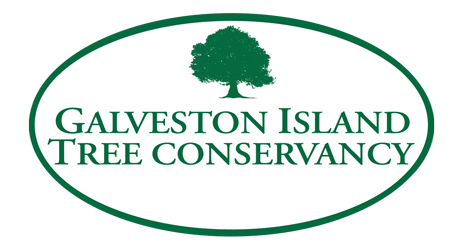Tree Trouble
Tree Stories: Tale of Tree Trouble
For years I’ve walked the neighborhood with my dogs on their favorite routes. Doing so I have come to know houses and neighbors, friendly (and some unfriendly) dogs, and also notable trees. I particularly enjoy our iconic Live Oaks (Quercus virginiana). In recent months I have spotted a favorite tree in trouble.
This particular Oak is a beautiful, large, and old one, a true Galveston treasure. It graces the front yard of a well-maintained historic home on a quiet block. This tree was cared for following the deluge of Hurricane Ike and seemed to have no ill effects. Oaks in areas with less extensive saltwater flooding actually had a better survival rate than other species.
Lately the tree is showing increasingly obvious signs of decline. The once-glorious canopy is gradually becoming less dense, with distressed-looking leaves. The trunk has large areas of bark browning and breaking away from the tree. This is a tree in trouble. The likely reason?
A couple of years ago the homeowners decided to put in a swimming pool. No one can argue with that, as a pool is a delightful addition to life in steamy Galveston summers. The pool area was excavated with the heavy equipment required to do the job. The homeowners protected the area within 3-4 feet of the tree’s trunk. However, structural and feeder roots extend out to the edge of a tree’s canopy and beyond. The pool was near enough the Oak that many of those roots were removed. Heavy equipment compacted the soil over the root zone, which squeezed out the space in the soil needed for oxygen and water to reach the feeder roots.
If the homeowner calls the Galveston County Master Gardener hotline about the tree, one of the questions she or he will be asked is “Has there been any construction, or change in landscaping around the tree?” The answer will of course be yes. That hotline receives many such calls about trees and other landscape plants that have been damaged due to unintentional injury or misuse of lawn chemicals. Damage may take months or years to become obvious.
Of course I have my fingers crossed that the tree will be able to recover. Perhaps with the advice of a Certified Arborist the homeowner could be given ideas for treatment or remediation. But once the damage begins to show it is often too late to save an injured tree. The better plan is to consider trees before changes are made, to avoid such pitfalls when possible.
We learned a valuable lesson with Hurricane Ike: we cannot take our trees for granted. While they are mostly tough and durable, even a tree that has stood for 20 or 100 years is a living thing that needs proper condition to thrive. For those in the urban landscape, that means we must manage them carefully and appropriately. If we treat them right, trees will continue to give us beauty, shade and oxygen for years to come.
“Tree Stories” is an ongoing series of articles about Island trees, tree care, and tree issues. If you have or know of a special tree on Galveston Island that should be highlighted, please email treesforgalveston@gmail.com. Margaret Canavan is a Galveston resident, a Galveston County Master Gardener, and a member of the Galveston Island Tree Conservancy Board.
Hurricane Ike caused the loss of 40,000 trees on Galveston Island. The Galveston Island Tree Conservancy was formed to address that loss and has replaced over 18,000 through grant-funded plantings and giveaways.



